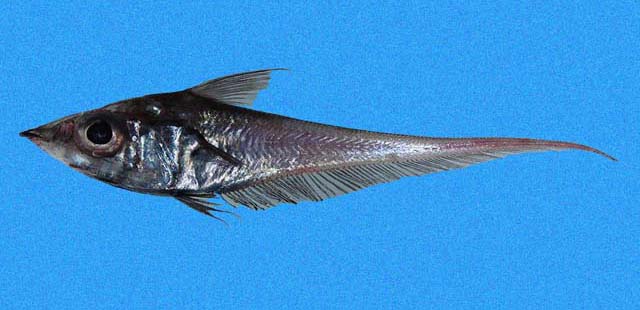| Macrouridae (Grenadiers or rattails) |
| 27.5 cm TL (male/unsexed) |
|
benthopelagic; marine; depth range 120 - 460 m, non-migratory |
| Eastern Pacific: Costa Rica to northern Peru. |
|
Dorsal spines (total): 0-0; Anal spines: 0-0. Head large; eyes large; snout moderately pointed, its anterolateral margin incompletely supported by bone. Head ridges rather weakly scaled, other head scales mostly without spinules; the dorsal and ventral snout surfaces mostly naked. Spines on lower jaw and pectoral girdle without spinules. Light organ large, lens-shaped black fossa between the pelvic fin bases. Swim bladder oval, with 6 to 11 short retia mirabilia and gas glands. Pyloric caeca 10 to 14. Overall color is light brown to swarthy, somewhat silvery ventrally, with heavy punctuations; mouth pale, blackish along tongue base; gill cavity blackish, paler with punctuations toward inner surfaces. |
| Juveniles are bathypelagic (Ref. 9315). Feeds mainly on copepods and other small crustaceans, but not exclusively bottom-dwelling invertebrates (Ref. 9315). |
|
Not Evaluated (N.E.) Ref. (130435)
|
| harmless |
Source and more info: www.fishbase.org. For personal, classroom, and other internal use only. Not for publication.

